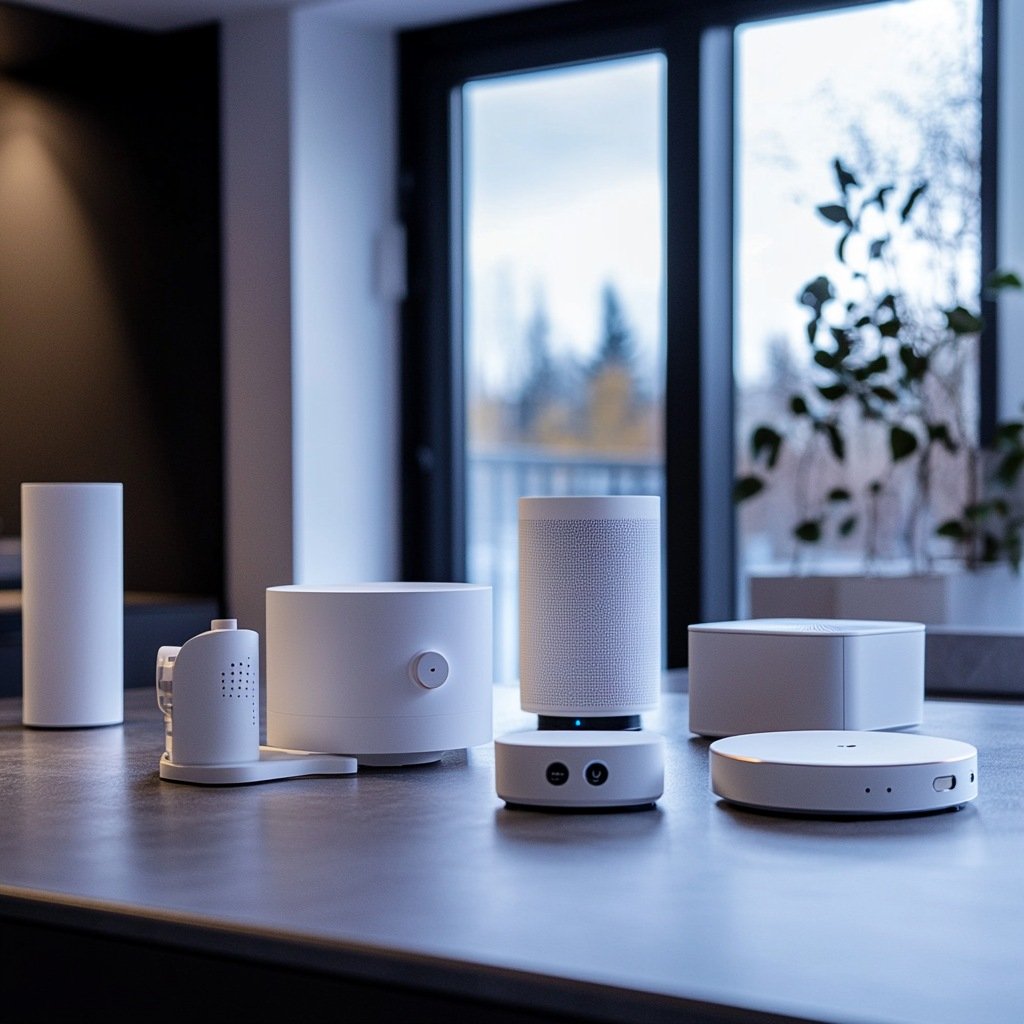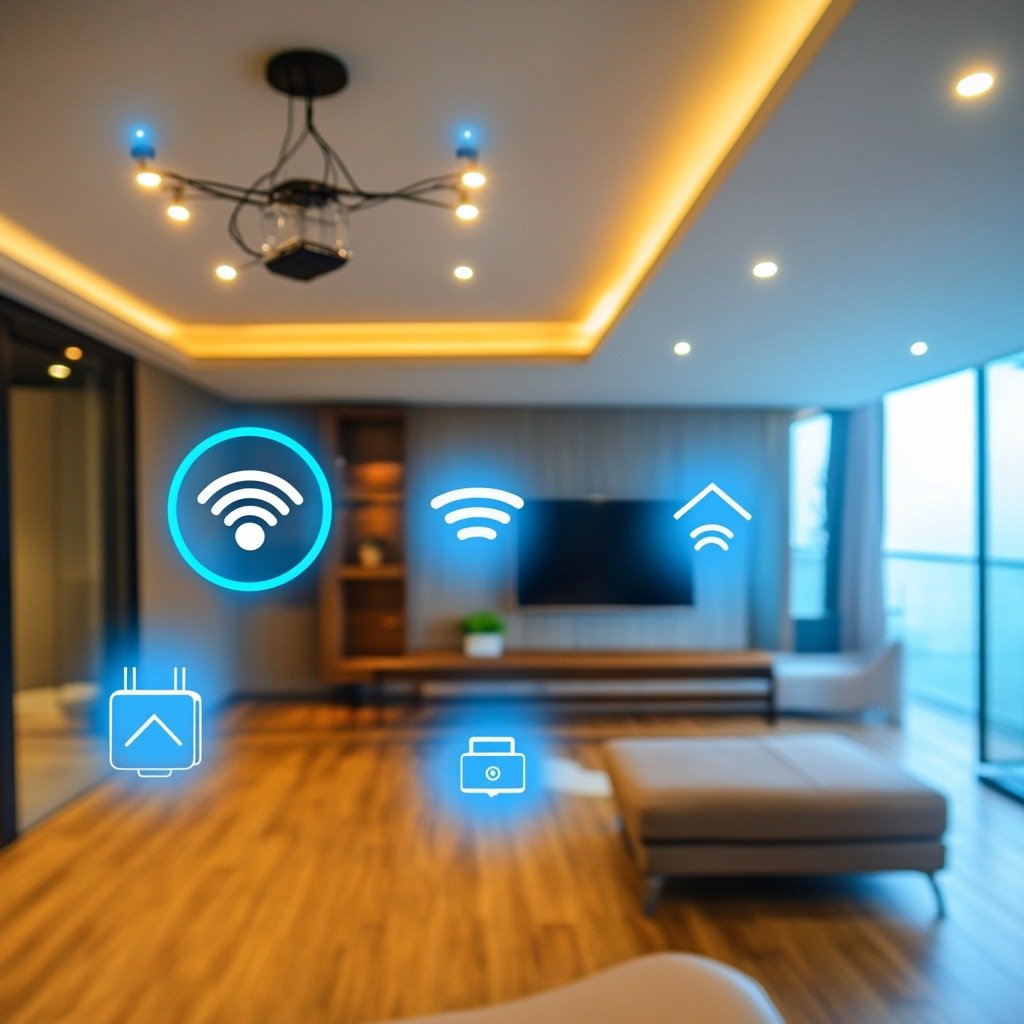Imagine controlling all your home’s smart devices with a single command—sounds convenient, right? A smart home hub makes this possible by connecting all your gadgets into one seamless system. But with so many options available, how do you choose the right one for your needs? This guide will help you navigate the world of smart home hubs, so you can make an informed decision and enjoy a more connected living space.
How to Choose the Perfect Area Rug for Your Space | The Pros and Cons of Buying vs. Renting
The Pros and Cons of Smart Appliances | The Best Smart Home Gadgets for Pet Owners
What Is a Smart Home Hub?
A smart home hub is a central device that allows various smart gadgets to communicate with each other. It acts as the brain of your smart home, enabling you to control lights, thermostats, security cameras, and more from a single interface.
Question for you: Wouldn’t it be great to adjust your home’s lighting and temperature without juggling multiple apps?

Factors to Consider When Choosing a Smart Home Hub
Compatibility with Devices
Not all hubs support every device, so it’s crucial to ensure the hub you choose is compatible with the gadgets you own or plan to buy.
- Supported Protocols: Common protocols include Wi-Fi, Zigbee, Z-Wave, and Bluetooth.
- Device Brands: Some hubs work best with devices from the same manufacturer.
Tip: Make a list of your current smart devices to check for compatibility.
Ease of Use
A user-friendly interface makes managing your smart home a breeze.
- Mobile App: Look for a hub with an intuitive app that’s easy to navigate.
- Voice Control: Hubs that support voice assistants like Alexa, Google Assistant, or Siri offer hands-free convenience.
Example: If you’re cooking and need to adjust the thermostat, simply saying “Set temperature to 22 degrees” can save time.
Automation Features
Advanced automation allows you to create customised routines.
- Scheduling: Set devices to operate at specific times.
- Triggers and Actions: Automate actions based on certain events, like turning on lights when motion is detected.
- Geofencing: Devices respond when you leave or approach your home.
Imagine: Your smart lights turn on automatically as you drive into your driveway at night.
Security Considerations
Protecting your home network is vital.
- Encryption: Ensure the hub uses strong encryption to safeguard data.
- Regular Updates: Hubs that receive frequent firmware updates are more secure.
- User Authentication: Features like two-factor authentication add an extra layer of protection.
Scenario: A secure hub prevents unauthorised access, keeping your personal information safe.
Budget
Smart home hubs come in various price ranges.
- Initial Cost: Determine how much you’re willing to spend upfront.
- No Hidden Fees: Be cautious of hubs requiring subscription fees for essential features.
- Long-Term Value: Investing more initially can offer better compatibility and longevity.
Tip: Sometimes spending a bit more now can save you money and hassle later.
Popular Smart Home Hubs in 2024
Amazon Echo Plus
- Pros: Excellent voice control with Alexa, wide device compatibility.
- Cons: Limited support for non-Amazon devices.
Samsung SmartThings Hub
- Pros: Supports multiple protocols (Zigbee, Z-Wave), robust automation.
- Cons: The app may be complex for beginners.
Google Nest Hub
- Pros: Seamless integration with Google services, user-friendly interface.
- Cons: Limited compatibility with non-Google devices.
Apple HomePod Mini
- Pros: Ideal for Apple ecosystem users, high-quality audio.
- Cons: Limited to HomeKit-compatible devices.
Question for you: Which ecosystem are you most invested in—Amazon, Google, Samsung, or Apple?
Steps to Choose the Right Hub
Step 1: Assess Your Current Devices
List all your existing smart gadgets to identify what protocols and platforms they use.
Step 2: Determine Your Needs
Decide which features are most important—voice control, automation, security, etc.
Step 3: Set a Budget
Establish how much you’re willing to spend on the hub and any additional devices.
Step 4: Research and Compare
Look up reviews and specifications of hubs that meet your criteria.
Step 5: Purchase and Install
Once you’ve made a choice, follow the manufacturer’s instructions for setup.
Example: Emily wanted advanced automation and Apple compatibility, so she chose the Apple HomePod Mini.
Summary Table
| Consideration | Key Points |
| Compatibility | Supports your devices and protocols |
| Ease of Use | User-friendly app and voice control |
| Automation Features | Scheduling, triggers, geofencing |
| Security | Encryption, updates, user authentication |
| Budget | Initial cost and long-term value |
Conclusion
Choosing the right smart home hub is essential for creating a seamless and efficient smart living experience. By considering compatibility, ease of use, automation features, security, and budget, you can find a hub that perfectly fits your needs. Take the time to assess your current devices and future plans to make the best choice.
FAQs
The Amazon Echo Plus is user-friendly and great for those new to smart homes, especially if you prefer voice control with Alexa.
Yes, but it can complicate your setup. It’s usually better to choose one hub that supports all your devices.
While Wi-Fi devices can work without a hub, a hub offers better automation, control, and can reduce network congestion.
Security varies by brand. Look for hubs with strong encryption, regular updates, and additional security features.
Choosing a hub from a reputable brand that provides regular updates can prolong its relevance and compatibility with new devices.




